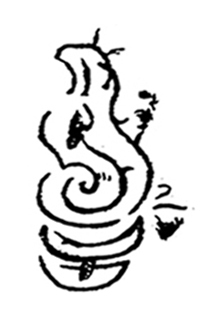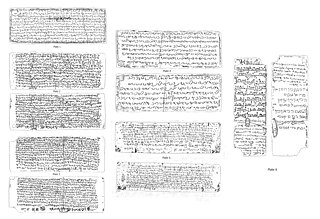Related Research Articles

The Pandyan dynasty, also referred to as the Pandyas of Madurai, was an ancient Tamil dynasty of South India, and among the three great kingdoms of Tamilakam, the other two being the Cholas and the Cheras. Existing since at least the 4th to 3rd centuries BCE, the dynasty passed through two periods of imperial dominance, the 6th to 10th centuries CE, and under the 'Later Pandyas'. Under Jatavarman Sundara Pandyan I and Maravarman Kulasekara Pandyan I, the Pandyas ruled extensive territories including regions of present-day South India and northern Sri Lanka through vassal states subject to Madurai.

Venad was a medieval kingdom lying between the Western Ghat mountains and the Arabian Sea on the south-western tip of India with its headquarters at the port city of Kollam/Quilon. It was one of the major principalities of Kerala, along with kingdoms of Kannur (Kolathunadu), Kozhikode (Nediyiruppu), and Kochi (Perumpadappu) in medieval and early modern period.

The Chera dynasty, IPA: [t͡ʃeːɾɐ], was a Sangam age dynasty who are credited as the Creators of land of Kerala as they have unified various regions of the western coast and western ghats to form the early Chera empire.

Joseph Rabban was a prominent Jewish merchant/aristocrat in the entrepôt of Kodungallur (Muyirikkottu) on the Malabar Coast, India in early 11th century AD.

The battle of Kandalur salai, also spelled Kanthaloor salai, was a naval engagement of the Cholas under Rajaraja I against the "salai" at Kandalur in Trivandrum Kerala. The exact location of Kandalur—somewhere south Kerala—is a subject of scholarly debate. The above event is sometimes assumed to be identical with the "conquest of Vizhinjam by a general of Rajaraja [I]", before the burning of Lanka, given in the Tiruvalangadu Grant/Plates.

Anjuvannam typically refers to a medieval merchant guild, consisting of non-Indian traders, primarily active in south India. Along with manigramam and ainurruvar, the anjuvannam merchant guild played a major role in the commercial activities of the region. Unlike manigiramam, which was also operating in Indian hinterland, the presence of anjuvannam is found only in coastal towns.

Kollam/Quilon Syrian copper plates, also known as Kollam Tarisappalli copper plates, or Kottayam inscription of Sthanu Ravi, or Tabula Quilonensis record a royal grant issued by the chieftain of Kollam to a Syrian Christian merchant magnate in Kerala. The royal charter is engraved in old Malayalam in Vattezhuthu on six copper plates. The document is the oldest available Chera Perumal inscription.
Arikesari Maravarman, also known as Parankusa, was a Pandya king of early medieval south India.

Elamkulam P. N. Kunjan Pillai, known as Elamkulam, was an Indian historian, linguist and academic from southern Kerala, India. He was a pioneering scholar of southern Indian history, Kerala history, in particular. Although only holding academic degrees in Sanskrit and Malayalam, and having no formal training as a historian, Elamkulam is considered one of the pioneers of modern Kerala historiography.

Jewish copper plates of Cochin, also known as Cochin plates of Bhaskara Ravi-varman, is a royal charter issued by the Chera Perumal king of Kerala, south India to Joseph Rabban, a Jewish merchant magnate of Kodungallur. The charter shows the status and importance of the Jewish colony in Kodungallur (Cranganore) near Cochin on the Malabar Coast.
The Five Hundred Lords of Ayyavole were a merchant guild from Aihole that provided trade links between trading communities in Tamil Nadu, Karnataka and Andhra Pradesh. They have been mentioned in inscriptions from the 9th century CE. Aihole was formerly a major city of the Chalukyas of Badami and a place with many temples and brahmans, some of whom seem to have become involved in the trading activities of the Five Hundred. But most of the Ayyavolu Lords were merchants, especially those engaged in long-distance trade. Their inscriptions between the 9th and 14th centuries record their endowments made to temples and throw light on their trading activities or commodities.
Southern Indian trade guilds were formed by merchants in order to organise and expand their trading activities. Trade guilds became channels through which Indian culture was exported to other lands. From the 11th century to the 13th century, South Indian trade in Southeast-Asia was dominated by the Cholas; and it replaced the Pallava influence of the previous centuries.

Sthanu Ravi Varma, known as the Kulasekhara, was the Chera Perumal ruler of Kerala in southern India from 844/45 to 870/71 AD. He is the earliest Chera Perumal ruler known to scholars.

Srimara Srivallabha was a Pandya king of early medieval south India.
Maravarman Avanisulamani was a Pandya ruler of early historic south India. He was the son and successor of Kadungon, who revived the Pandya dynastic power after the Kalabhra interregnum. Not much information is available about either of these kings.
Jayantavarman, known in Tamil as Seliyan Sendan, was a Pandya ruler of early historic south India. He is best known for extending the Pandya rule to the Chera country (Kerala). He was succeeded by his son Maravarman Arikesari Parankusan.

Viraraghava copper plates, dated 1225 CE, ofCochin, or Kottayam plates of Viraraghava Chakravartin, or Syrian Christian copper plate, or Iravi Kortann's Plate, describe the concession made by the local king Viraraghava to Syrian Christian merchant Iravikorttan, the chief of Manikkiramam (Manigiramam) in Makotaiyar Pattinam.

Chera Perumals of Makotai, also known as the Perumal dynasty of Kerala, or Cheraman Perumal dynasty of Mahodayapuram, were a ruling dynasty in present-day Kerala, south India. Makotai, or Mahodayapuram, the seat of the Cheraman Perumals, is identified with present-day Kodungallur in central Kerala. Initially, their influence appeared limited to the area between present-day Quilon and Quilandy, but later extended to up to Chandragiri river in north Kerala and to Nagercoil in the south.

Old Malayalam, inscriptional language found in Kerala from c. 9th to c. 13th century CE, is the earliest attested form of Malayalam. The language was employed in several official records and transactions. Old Malayalam was mostly written in Vatteluttu script. Most of the inscriptions were found from the northern districts of Kerala, those lie adjacent to Tulu Nadu. The origin of Malayalam calendar dates back to year 825 CE.
Valantaravai inscription is a medieval merchant guild inscription discovered from near Valantaravai, Ramanathapuram in Tamil Nadu in southern India. The epigraph is one of the rare records mentioning early Jewish, Christian and Muslim presence in southern India. It dates to the period of ascendancy of the Ainnutruvar or Ayyavole Five Hundred merchant guild in south India.
References
- 1 2 Noburu Karashima (ed.), A Concise History of South India: Issues and Interpretations. New Delhi: Oxford University Press, 2014. 136-144.
- 1 2 3 4 5 6 7 Y. Subbarayalu (1 June 2015). "Trade guilds of south India up to the tenth century". Studies in People's History. 2 (1): 21–26. ISSN 2348-4489.
- ↑ Noburu Karashima (ed.), A Concise History of South India: Issues and Interpretations. New Delhi: Oxford University Press, 2014. 136.
- ↑ Narayanan, M. G. S. Perumāḷs of Kerala. Thrissur (Kerala): CosmoBooks, 2013. 277, 278 and 295.
- ↑ Noburu Karashima (ed.), A Concise History of South India: Issues and Interpretations. New Delhi: Oxford University Press, 2014. 136-138.
- ↑ Y. Subbarayalu (1 June 2015). "Trade guilds of south India up to the tenth century". Studies in People's History. 2 (1): 21–26. ISSN 2348-4489.